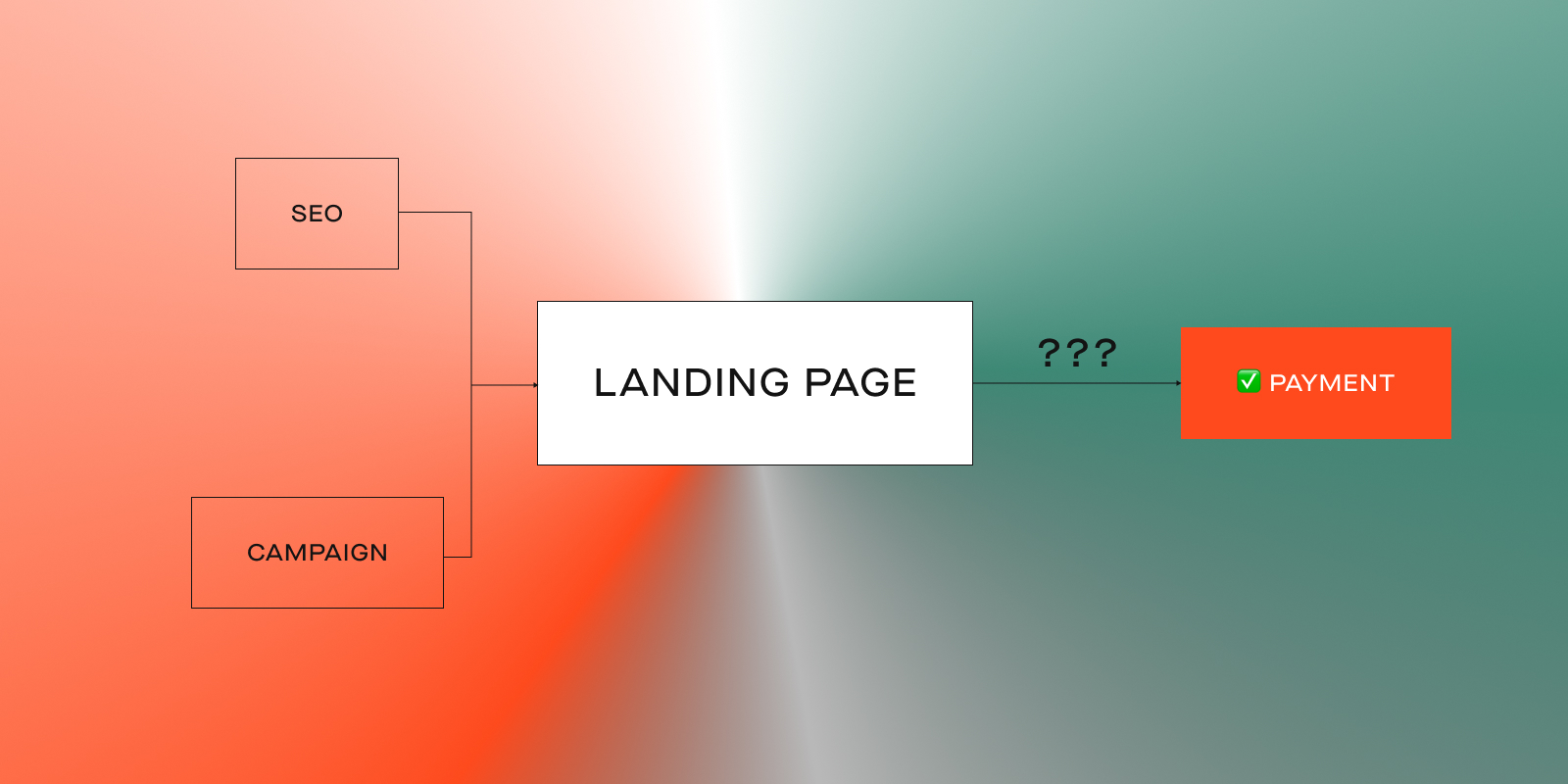

paragraphs, blockquotes, images, and video all in one place instead of having to add and format them individually. Just double-click and easily create content.
A rich text element can be used with static or dynamic content. For static content, just drop it into any page and begin editing. For dynamic content, add a rich text field to any collection and then connect a rich text element to that field in the settings panel.


Headings, paragraphs, blockquotes, figures, images, and figure captions can all be styled after a class is added to the rich text element using the "When inside of" nested selector system.
Onboarding guides users through the product so they can understand and use it effectively.
Is web and mobile app onboarding important? Absolutely! A well-designed onboarding flow boosts user experience and reduces abandonment rates, especially, when they meet users’ needs and doubts. For example, the benefits-oriented onboarding focuses on the value while the function-oriented onboarding focuses on the product's capabilities.
There are various approaches to it, but today let's look at the Web-to-App flow.
Web-to-App (or Web2App) flow is actually a marketing tool and a user acquisition channel. Unlike Direct-to-App funnels that have been receiving some tough love, Web2App redirects viewers from a landing page to an app, whether that means opening it in-browser or prompting them to download a mobile app.
It can serve as an app's onboarding flow.
That said, I wouldn't call this strategy a magic pill that one adopts and — voilà — suddenly, all the users in the world are yours. It's better to view it as a testing ground — a way to gather insights, iterate, and ultimately improve both user acquisition and conversion.
Relying solely on app stores limits you to their existing user base. Web2App flows open the door to a much broader audience by tapping into the vastness of the Internet. With creative campaigns and SEO, you can reach potential users who might never discover your app through the App Store or Google Play.
Disclaimer: while Apple’s privacy rules have evolved — including SKAdNetwork updates — the core limitations of in-app tracking without ATT opt-in still apply. For simplicity, this overview focuses on the high-level differences.
Acquiring new users directly through the App Store isn’t as simple as it used to be. First, your people need to opt-in to ATT, and once done, you need to access their IDFA — which is a jargon for "your users have to allow you to track them."
Their IDFA (Identifier for Advertisers) is a user's unique identifier that helps you track their interactions without revealing personal information. It facilitates targeted advertising and measures campaign effectiveness. To view that, users have to give their consent through ATT (App Tracking Transparency).
And why do you need that? To reach the users who are most likely to value your app’s core functionality. But there’s a problem: many users don’t opt in. That means you’re flying blind when it comes to finding the right people — especially those who don’t even know your app exists yet. Not the end of the world, but ouch.
Now contrast that with Web2App flows. Outside of the store, you’re free to build your own audience strategies. You can target specific groups, run personalized campaigns across platforms, and track performance on your own terms. Once you attract your people, you guide users to the store to download.
The result? A more qualified audience, better conversion rates, and stronger signals to the store that your app is relevant. This creates a mobile app onboarding loop that not only brings in more users — but the right ones.
Onboarding processes should only ask for essential information to minimize friction. But with Web2App, you can ask more questions, set up more nuanced tracking, and gather deeper insights from users early on. I'll touch on questions later, but for now, let's take a look at tracking.
Tracking user progress through the onboarding experience is key to identifying drop-off points and understanding behavior. Start with heat maps, event tracking, and timing to get a glimpse into their motivations and frustrations.
That data doesn’t just improve onboarding. It can reveal how your creatives perform, who they resonate with, and where to optimize messaging. This is how you improve conversion rates.
If you set up tracking, ask the right questions and collect user feedback, you'll be able to learn about interactions and behaviors that can help improve the onboarding experience, the product itself, and specific feature promotion.
I have my reservations about Web-to-App being more financially beneficial. It’s not that straightforward. While there are clear advantages worth mentioning, whether it works for you will depend on your available resources and how you set up the onboarding process.
One strong argument in favor: Web2App converts people into payers, not just users. That's helpful. I’ll share a few tips below on how to facilitate that.
Another popular point: you avoid App Store or Play Store commissions and get faster access to revenue collection. Makes sense, but it’s more complex than that. We often forget that there are actual benefits to paying that commission.
App Store and Play Store offer you an infrastructure: they take care of refunds, payment errors, and tax. If you go off-store, those responsibilities and costs fall on you. So, you’re still spending money — just shifting it from commission to maintenance.
Another thing is that you have to pay for ads outside of the stores, too. That can get pricey.
The bottom line is that you're paying anyway. The question is where you spend your resources and for which goals.
I'd say choose your poison.
Progressive onboarding gradually introduces users to the app's features over time.
Maybe not a step-by-step guide, but in a similar way, Web2App gently introduces the brand and walks users through the product's capabilities, leading them directly to payment.
The journey begins with an ad or promo. Viewers are taken to a landing page where users interact with your brand. You explain who you are and highlight the product’s key features. Once users understand the value, they click on a CTA and trigger the onboarding flow.
The Web-to-App flow takes the shape of a questionnaire. This not only helps you learn about your future users, but also encourages them to invest in the product even before they complete the onboarding.
As they move through the onboarding process, you can start familiarizing users with the brand using micro-interactions and visual language. This happens even before user registration or a signup process.
That early investment acts as a psychological trigger. The more time, effort, attention, and information users put in, the more likely they are to convert — especially if the product clearly addresses a need or a pain point.
You can customize those journeys by target group and persona, making the whole flow more flexible and relevant.
And then they pay. Without using the product, a trial, or exploring screenshots. Their payment will serve as a commitment and incentivize them to use the product. That will eventually raise your user engagement.
Overall, by being outside of the App Store and Play Store, Web2App gives you the opportunity to learn fast, iterate quickly, and adapt your onboarding journey and product positioning on the fly.
That speed and flexibility make it a great place to test pricing, target audiences, trials, and upselling without a big commitment or changes to the core features, app experience, or offering.
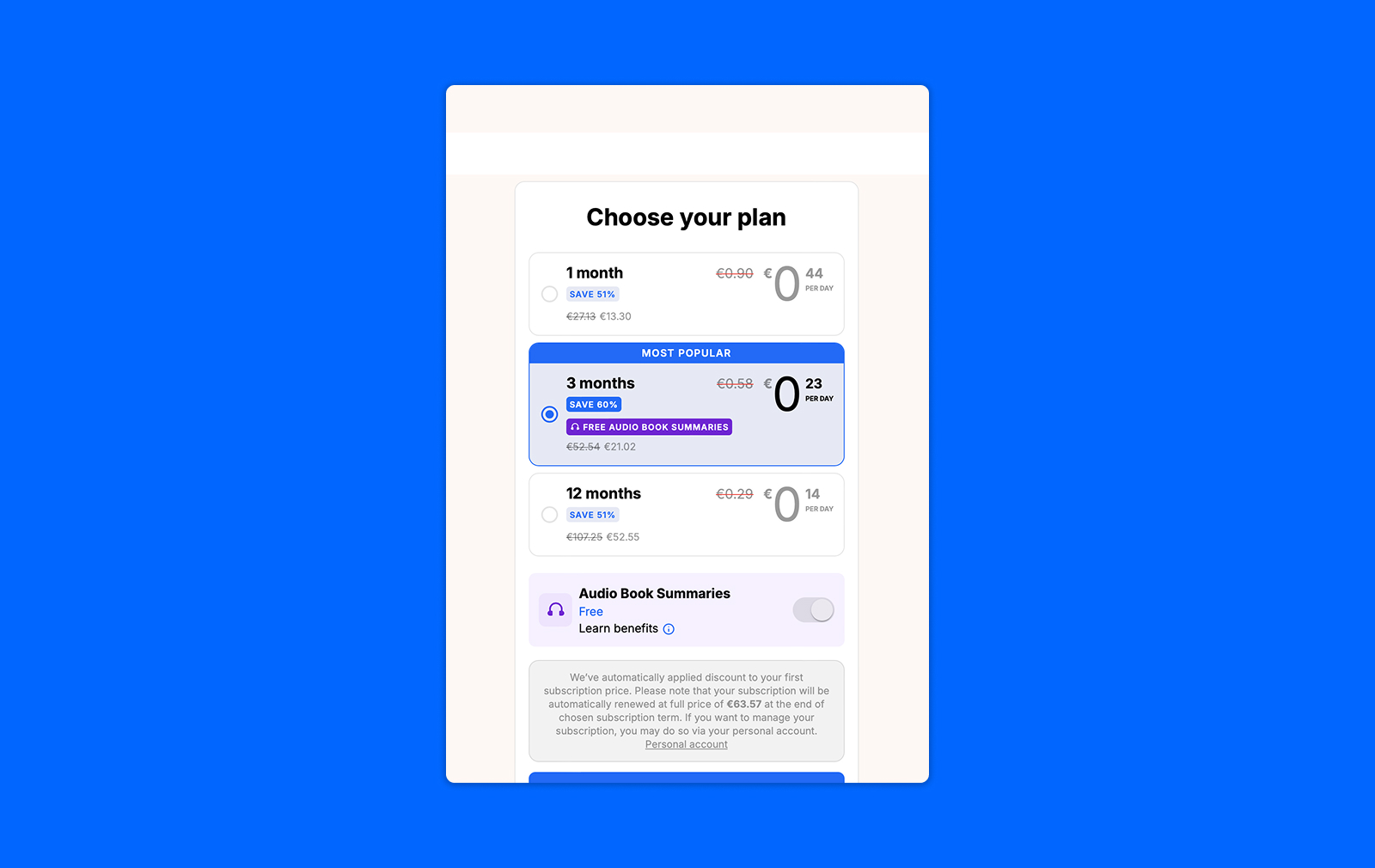
And this is how a good web or mobile app onboarding process leads to higher adoption rates, better user retention, and user engagement.
Let’s look at a few industries that could benefit most from a user onboarding flow like Web2App.
Think habit-forming products — like language learning apps, fitness programs, book summary tools, and online courses.
Onboarding success here depends on a seamless and motivating experience. A well-crafted Web2App flow helps kickstart user habits while offering a way to reach and test new audiences.
This is especially valuable when your growth starts to plateau, and you need fresh momentum. You gain it by trying new things and learning.

HealthTech products often underestimate onboarding journeys, and that's unfortunate. With contextual onboarding, you can collect essential user information, gain required consents, and — through Web2App — guide users toward monetization.
Also, it's a great way to collect users' goals and health conditions to offer more personalized care. You can check ZingCoach screens belowe that collects a lot of information on person’s health and lifestyle to match them with an appropriate workout plan.
This one might raise some eyebrows, as it may imply unsafe practices. But hear me out.
For biotechs, especially, in fashion, consumer healthcare, nutrition & wellness offering DTC (direct-to-consumer) solutions, a thought-out onboarding flow can streamline data collection, onboard users or trial participants (which, let’s be honest, is often a UX problem), and teach users about the solution in a clear, trust-building way.
Web2App flows can help B2B companies streamline client interactions and set up web-based transactions (subscriptions, anyone?).
I haven’t explored banking apps in depth, so I won’t pretend to be an expert there, but it’s possible there are some interesting use cases worth testing, especially around user education or initial account setup.
Who doesn't talk about AI today? My four-year-old nephew. He's into space exploration right now. Smart man.
For the rest of us, AI products are quickly becoming part of everyday life — and the onboarding process is often the very first touch point where that integration begins.
A questionnaire flow helps tailor the experience, assist your users, customize the offering, and monetize. That can be relevant to startups that need to test and grow quickly.
Let’s talk app onboarding best practices. As always, take them with a grain of salt. What works for one company may not work for another. These ideas aren't an onboarding checklist, but rather a few nuggets I’ve tried or found promising — worth exploring if they fit your context.
You can appear in Google’s sponsored section by running paid search ads through Google Ads. Instead of linking to your homepage (or even triggering the sign up process), drive that traffic into a Web2App flow. That way you turn casual clicks into high-intent users and delivers significantly higher conversion rates.
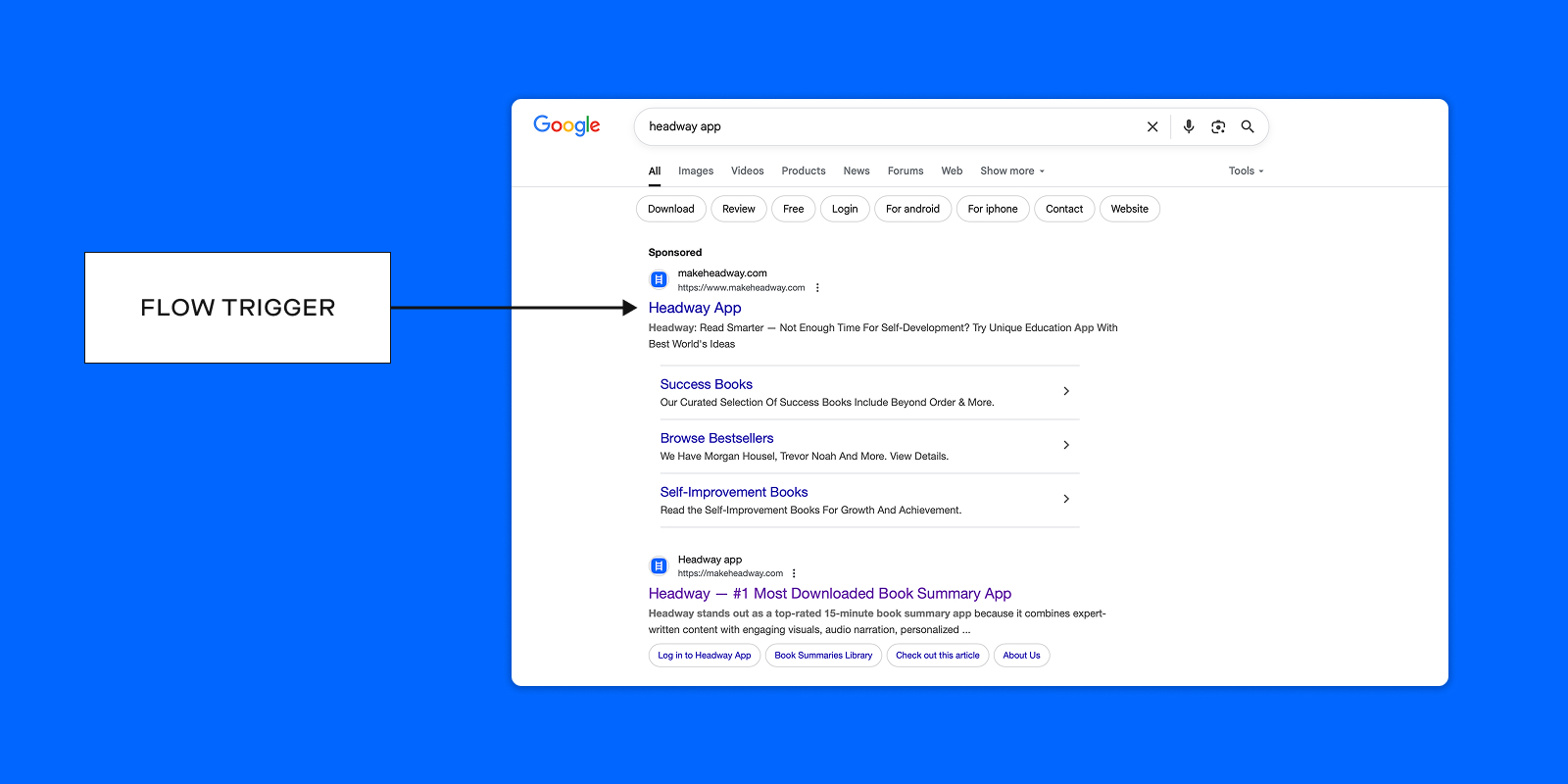
With Web2App flows, it's common — and strategic — to use long questionnaires.
In a regular onboarding flow, the goal is to minimize friction. You want a new user to get started quickly. And as a rule of thumb, a mobile onboarding flow needs to be shorter and more engaging compared to web onboarding.
But Web-to-App plays by different rules. As counterintuitive as it seems, pushing people through a longer questionnaire may show better results.
Why? Because people entering Web2App aren't your users yet. They haven’t downloaded your app or paid for your service. They’re strangers who just came across your product online (maybe for the first time) and are starting their journey.
A longer questionnaire helps you learn more about your potential users — their demographics, background, goals, and pain points. This way, you can create a more customized experience for them.
It also serves as a brand introduction. If someone’s never seen your product before, the flow becomes a guided preview of your app’s look and feel, interactions, and value.
And finally, long questionnaires create commitment. The more time and info a person invests, the more likely they are to subscribe or pay — because they’re already mentally stepping into the product.
When you ask a question to personalize the experience — like “How much time per day would you like to read?” — add a small progress bar or loading screen. It gives users the sense that something’s happening in real time, that their input matters.
And just a gentle reminder: if you ask, follow through. Customize the experience accordingly — nothing breaks trust faster than asking and ignoring the answer.
If someone is exploring your product, chances are they’re pursuing a goal or aspiration.
At the end of the onboarding flow, show a quick summary of the answers users provided. Highlighting their goals does two things: it makes them feel heard, and it reminds them why they need your product in the first place.
Some apps help build habits — like going to the gym or reading daily. Others help achieve a goal — like learning design or coding. The difference matters: one supports an ongoing journey, the other leads to a clear result.
For products designed to solve a specific problem, focusing on the user’s goal during onboarding makes the offering feel more purposeful — and more worth committing to.
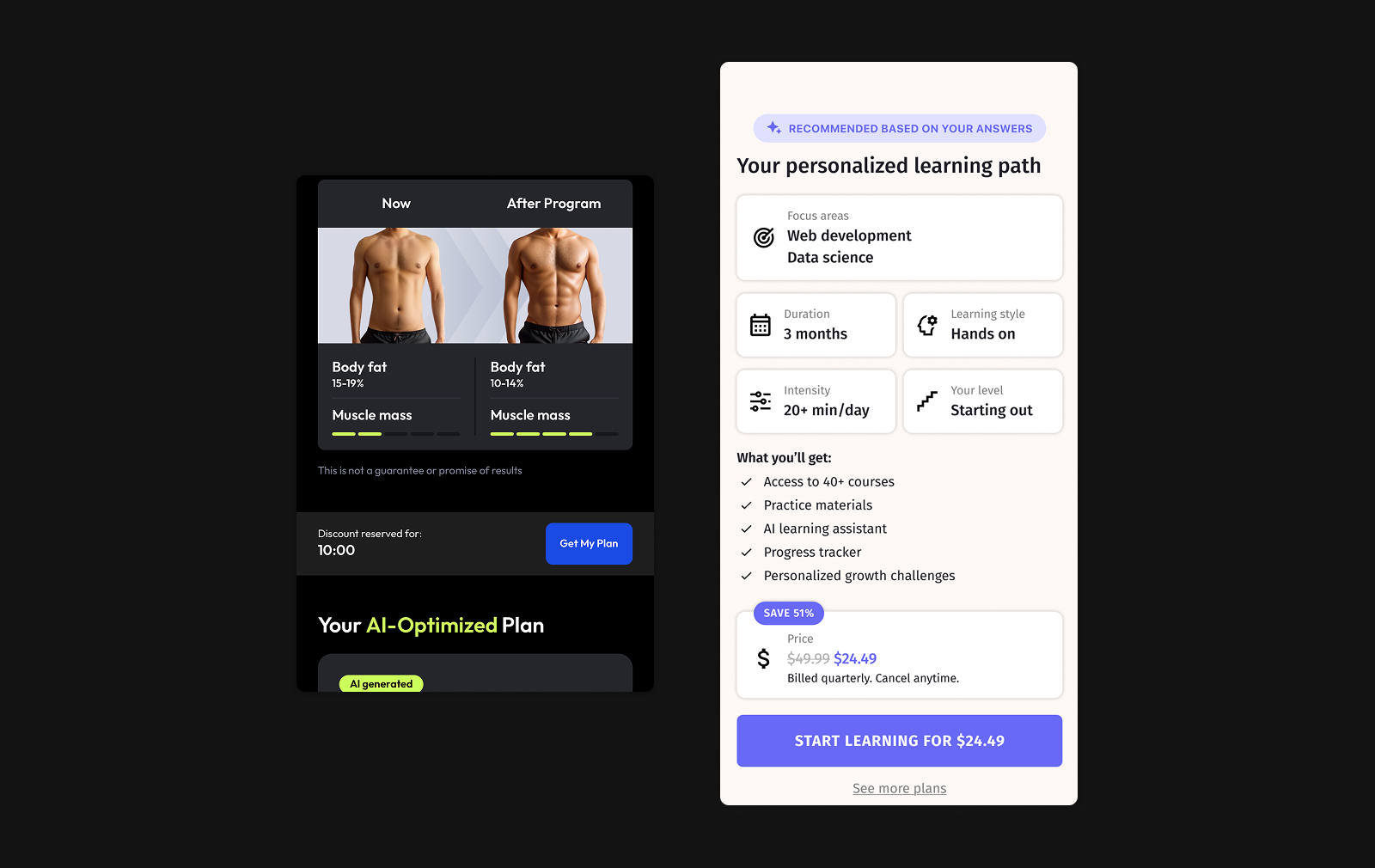
I'm pretty sure if you go online, every problem these days is solved with gamification. So here's a brief list of what's good to have.
Add progress bars to show how far users have come in the onboarding process. Make quizzes interactive. Create personalized profiles or avatars as a fun output of the flow.
And most importantly? Celebrate and reward users for their effort — whether they’ve answered questions, completed steps, or just kept going. A little recognition goes a long way.
fter a question screen, insert an empathy screen — a brief moment to show users that their answers are acknowledged and appreciated. What can it look like? Repeat their answer, say you understood, share that it's a common problem, and there are many people like them, for example.
Reflecting back what they just shared builds trust and signals that you are actually listening.
It also adds space to breathe during the app onboarding experience. Instead of bombarding people with back-to-back questions, you create a gentler rhythm—something that feels more like a conversation and less like an interrogation.
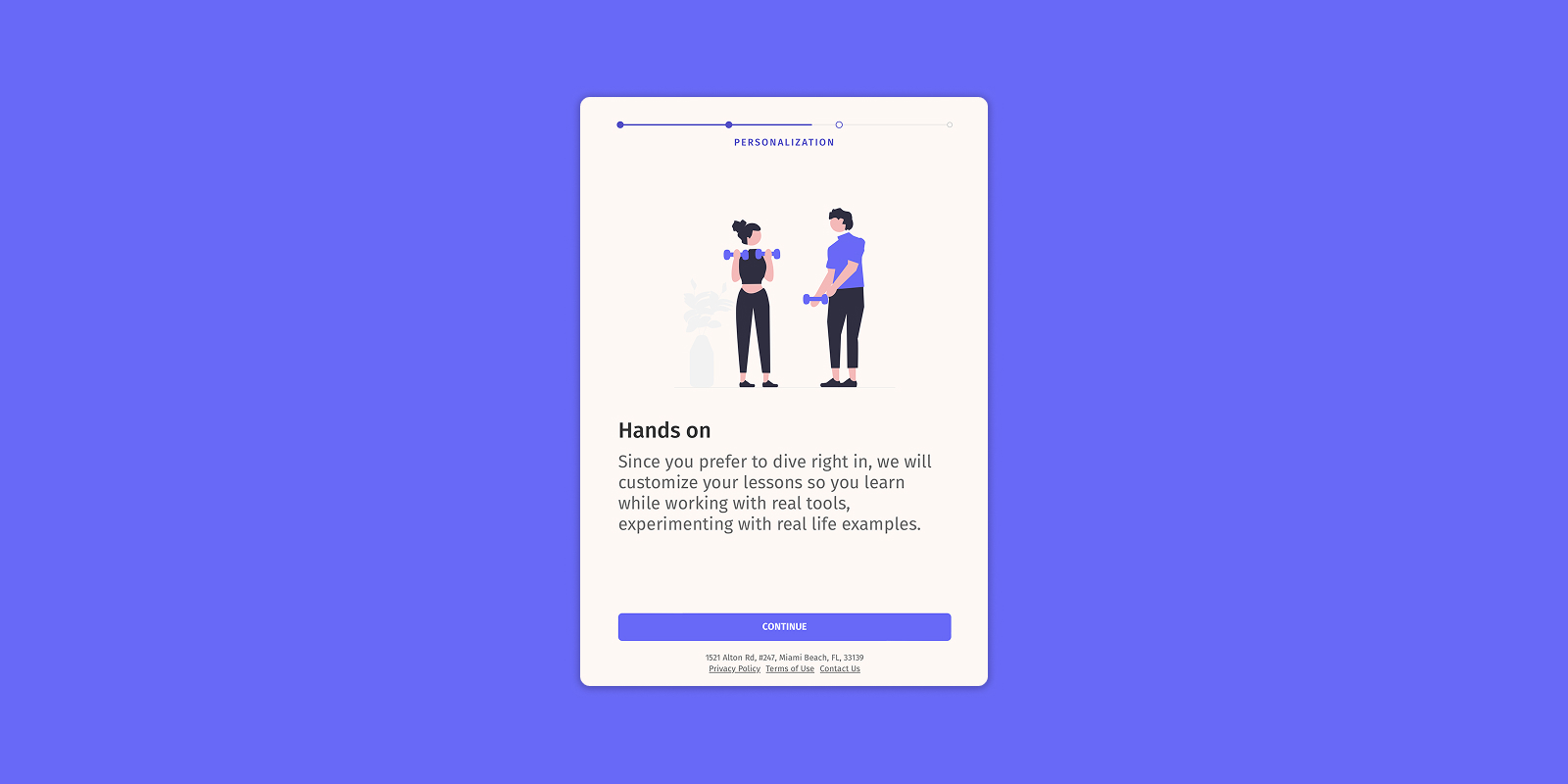
Use it: app ratings, reviews, quotes, awards, and certificates. Since people may not be familiar with the product, this will help with credibility.
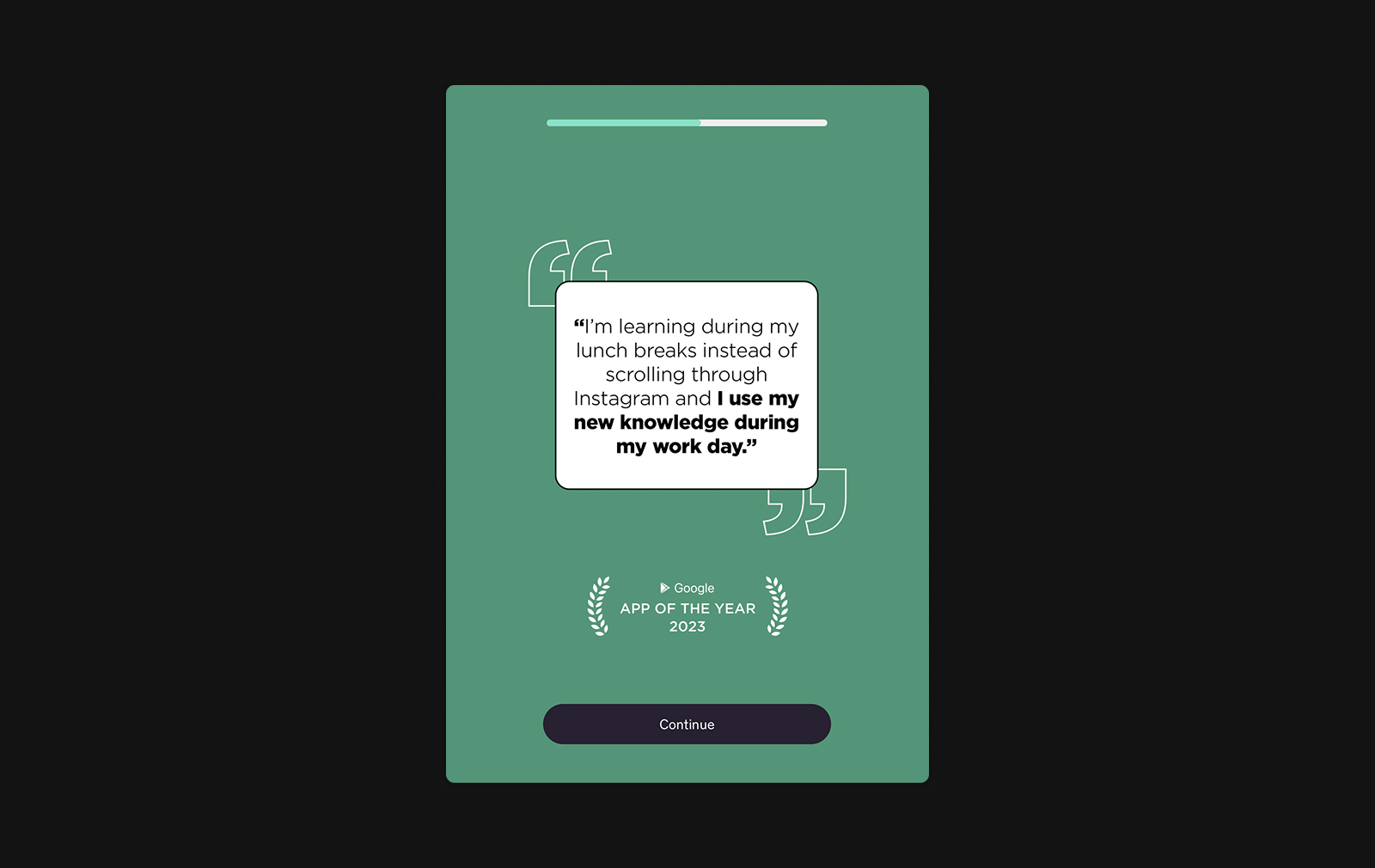
Because Web2App flows build higher intent, offering a free plan at the end might undercut their momentum.
These longer onboarding flows help convert people into payers. After investing time and energy, users are often more ready to buy — especially if they’re serious about solving a problem or reaching a goal.
Plus, with all the collected data, you can fine-tune your creatives, and re-target ads to people who are more likely to convert. So you can initially get more people with higher intent to pay.
To make the final step of the onboarding flow effective, your checkout needs to be as simple and friction-free as possible. This is where fewer steps equal higher conversion.
For mobile app onboarding, include only necessary info to choose a plan and make a payment.
Consider placing the plan summary and payment form on the same screen. This eliminates the need for extra taps and keeps the flow clean.
All CTAs should stay focused — either leading directly to payment or to selecting a plan.
If your product is goal-oriented, this is your moment to shine: before showing payment, remind users what the plan includes based on their own answers. It’s a gentle nudge that connects their goals to your offer.
A helpful tip: add a payment button above the fold. If someone’s ready to buy the moment they land on the page, don’t make them look for the way to do that. That button can trigger a scroll-down or open a payment dropdown — whichever gets the job done quickly.
Avoid using pop-ups for payment. Two reasons:
One of the common mistakes? Not testing your payment system properly. Just because it worked in staging doesn’t mean it’ll work live. So make sure your payment goes through both during the staging and live.
Do you want to play with discounts? Great. Just make sure that the new price stands out: make it bigger, bolder, and high-contrast. Those little details will make the contrast with the older price more salient and attractive.
A suggestion when designing small components like cards with plan information: keep them simple. Don’t overwhelm users with clutter. Instead of packing everything — plan name, old price, new price, discount, terms — into a tiny card, spread key info throughout the whole screen. It’ll improve readability and reduce cognitive load.
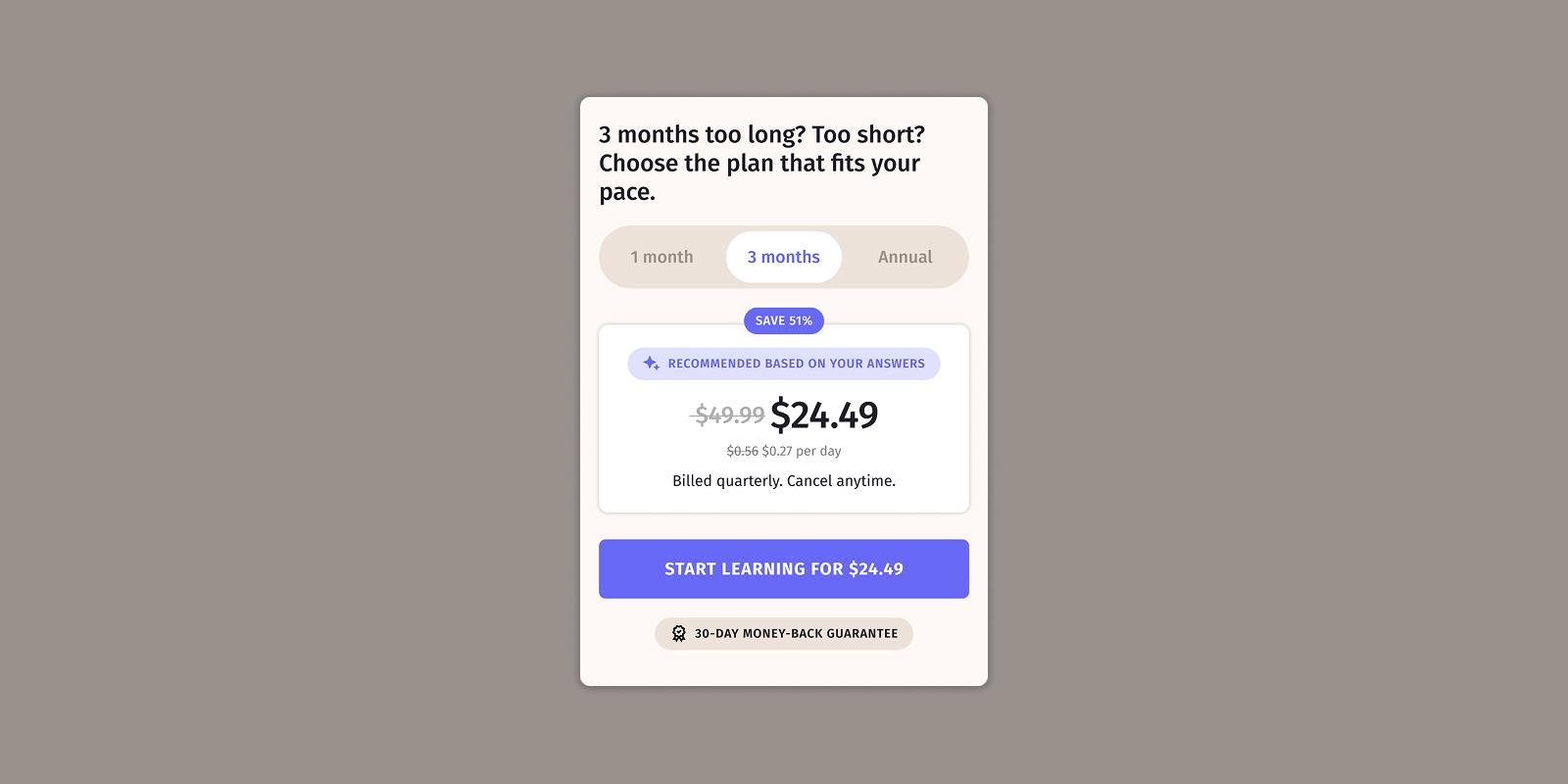
To tell users about payment terms, use simple language and keep information easy to find. This will add to trust and de-risk the product for the viewers.
And lastly, try different CTAs. Even if they all lead to the same outcome (payment), small shifts in wording can resonate differently. You won’t know what works until you test it.
Small tweaks early on can make a big difference later. But as you focus on delighting users, improving the onboarding experience, and streamlining your onboarding flows, don’t forget to widen your reach.
Make sure a lot of people see your flow. The more people go through it, the more possibilities to convert you'll have.
No matter how optimized it is, if it doesn’t reach enough web and mobile users, you won’t have the chance to convert them. Distribution matters, sometimes even more than we want to admit.
To spark some inspiration, I’ve included a few onboarding screens. Take a look at them — maybe something will spark an idea for you. What you'll see are onboarding examples from:
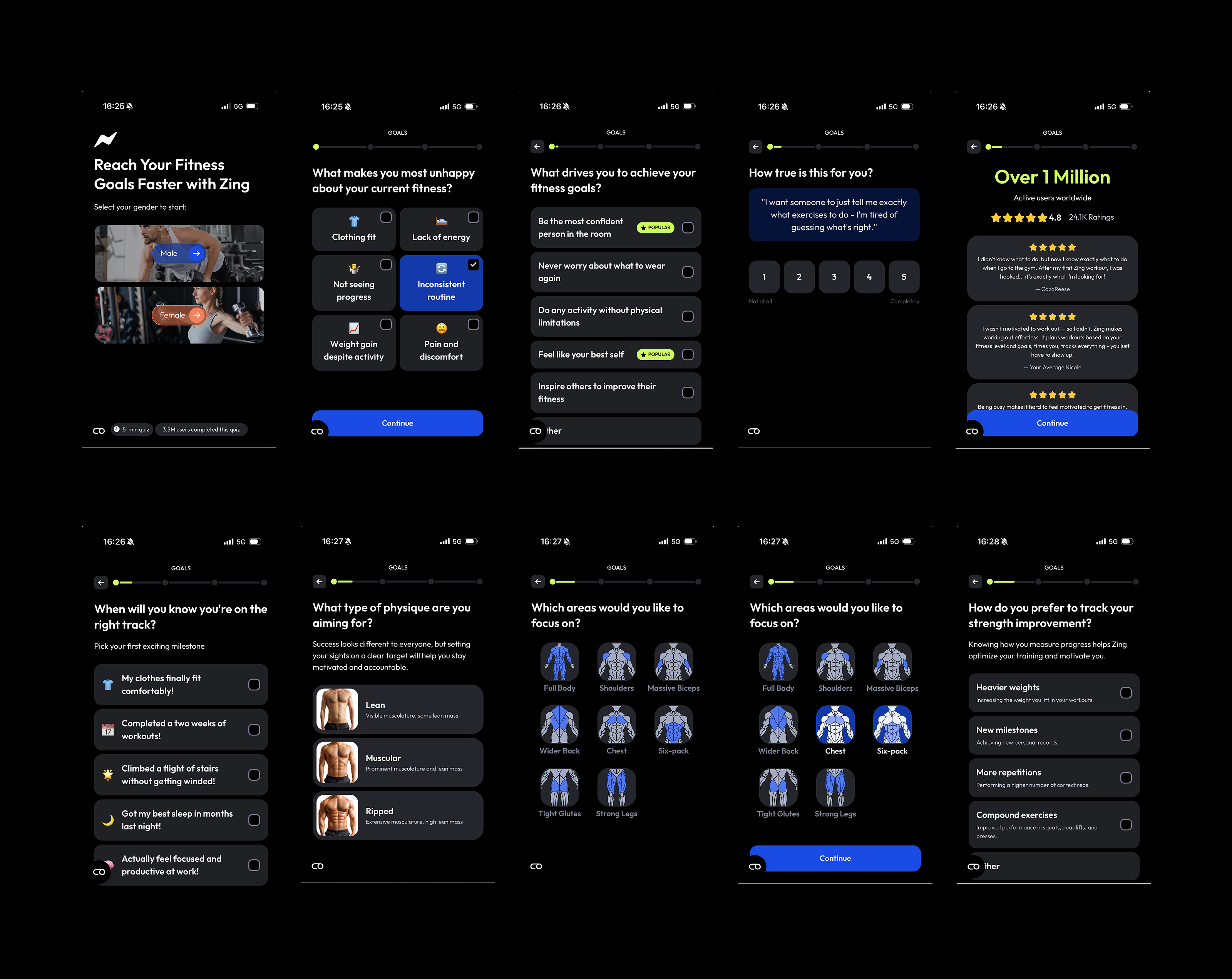
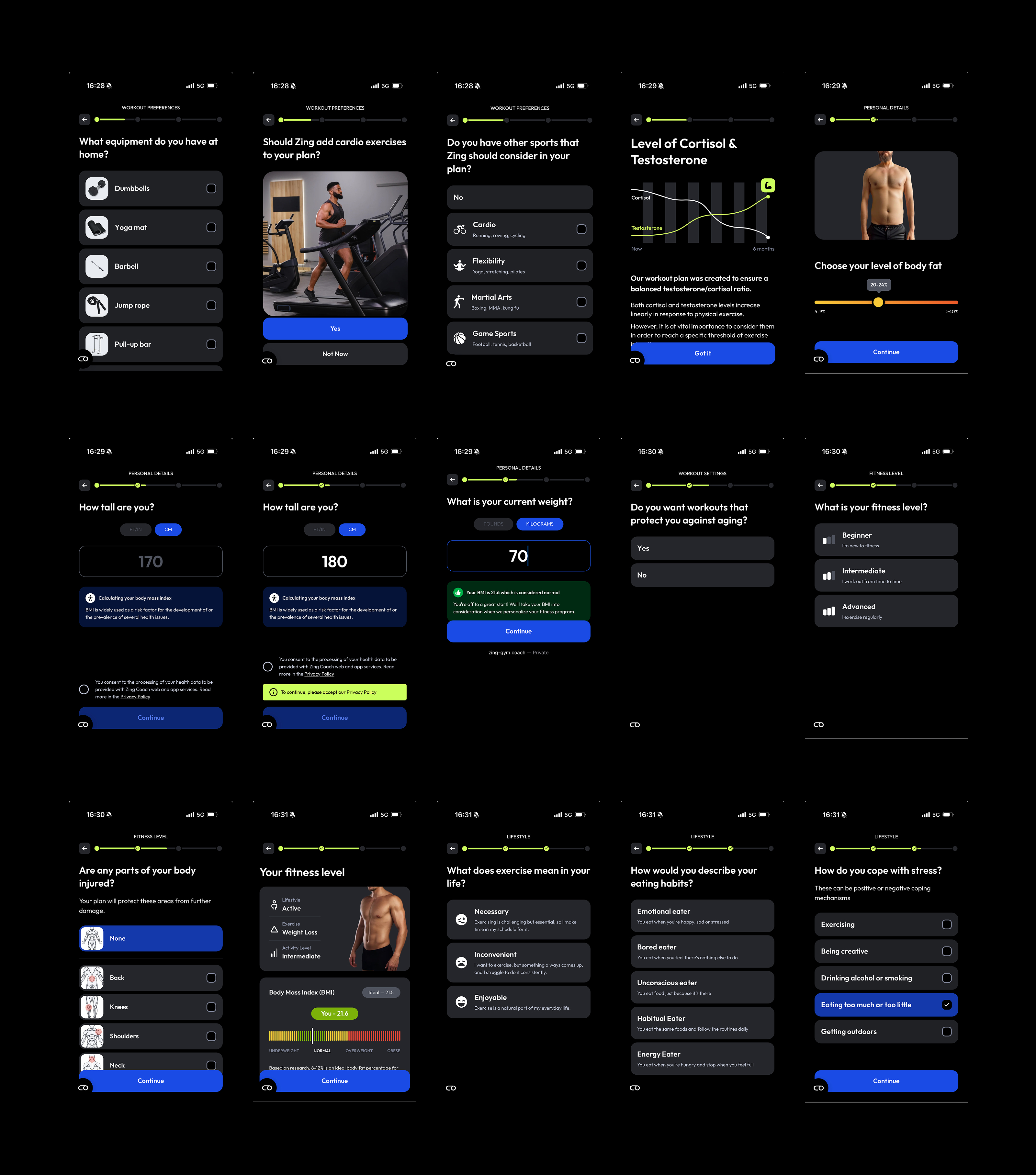
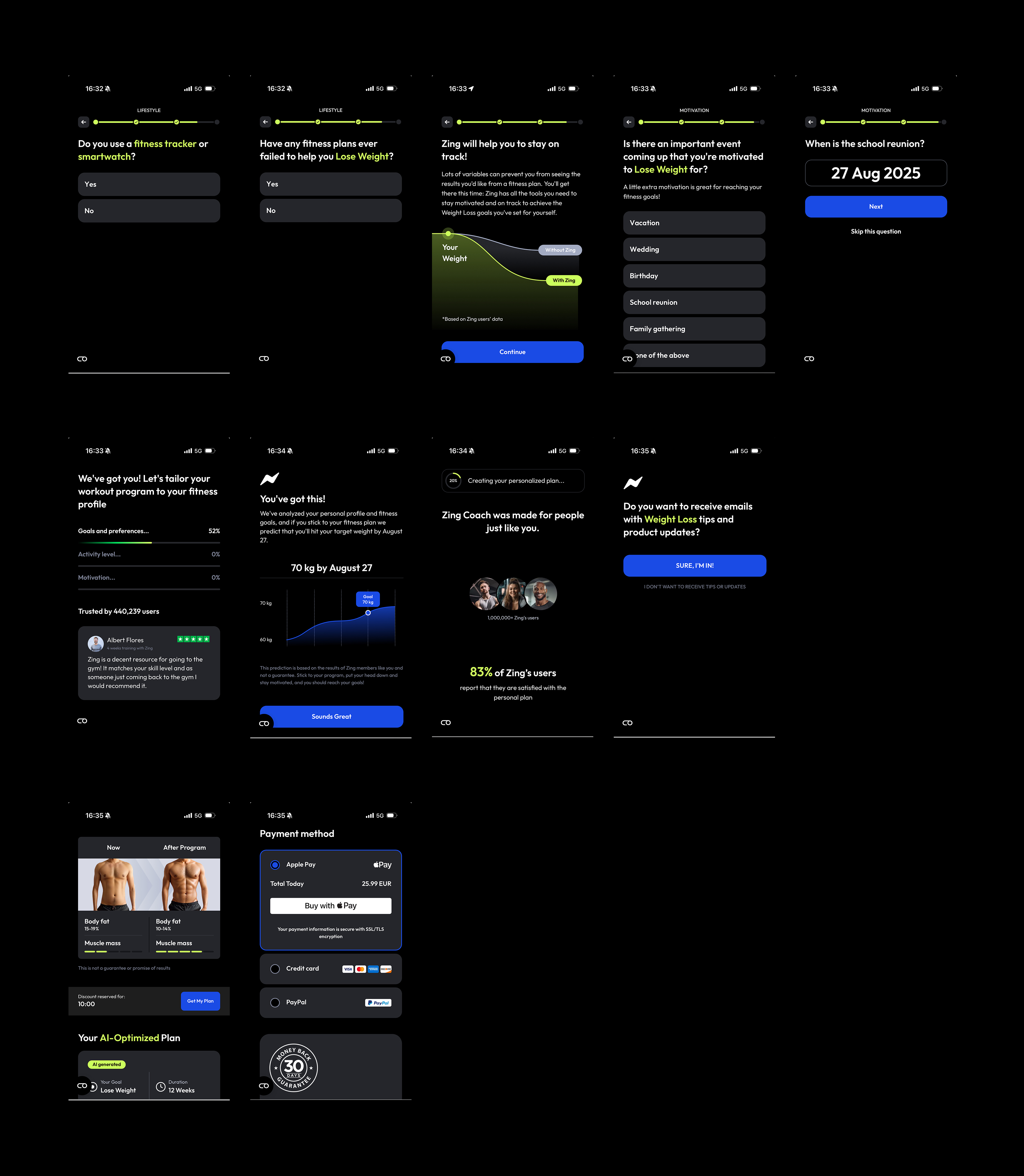
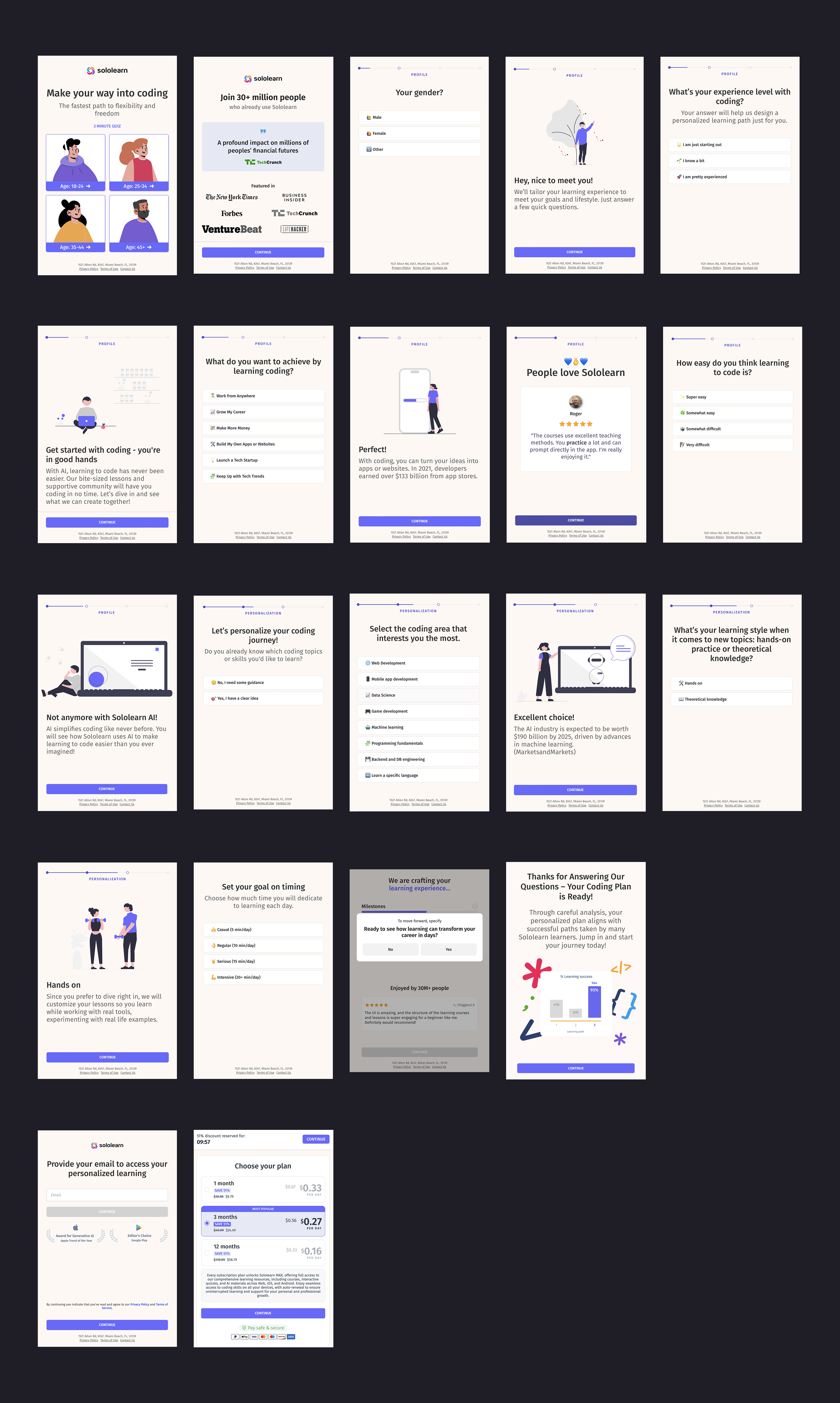
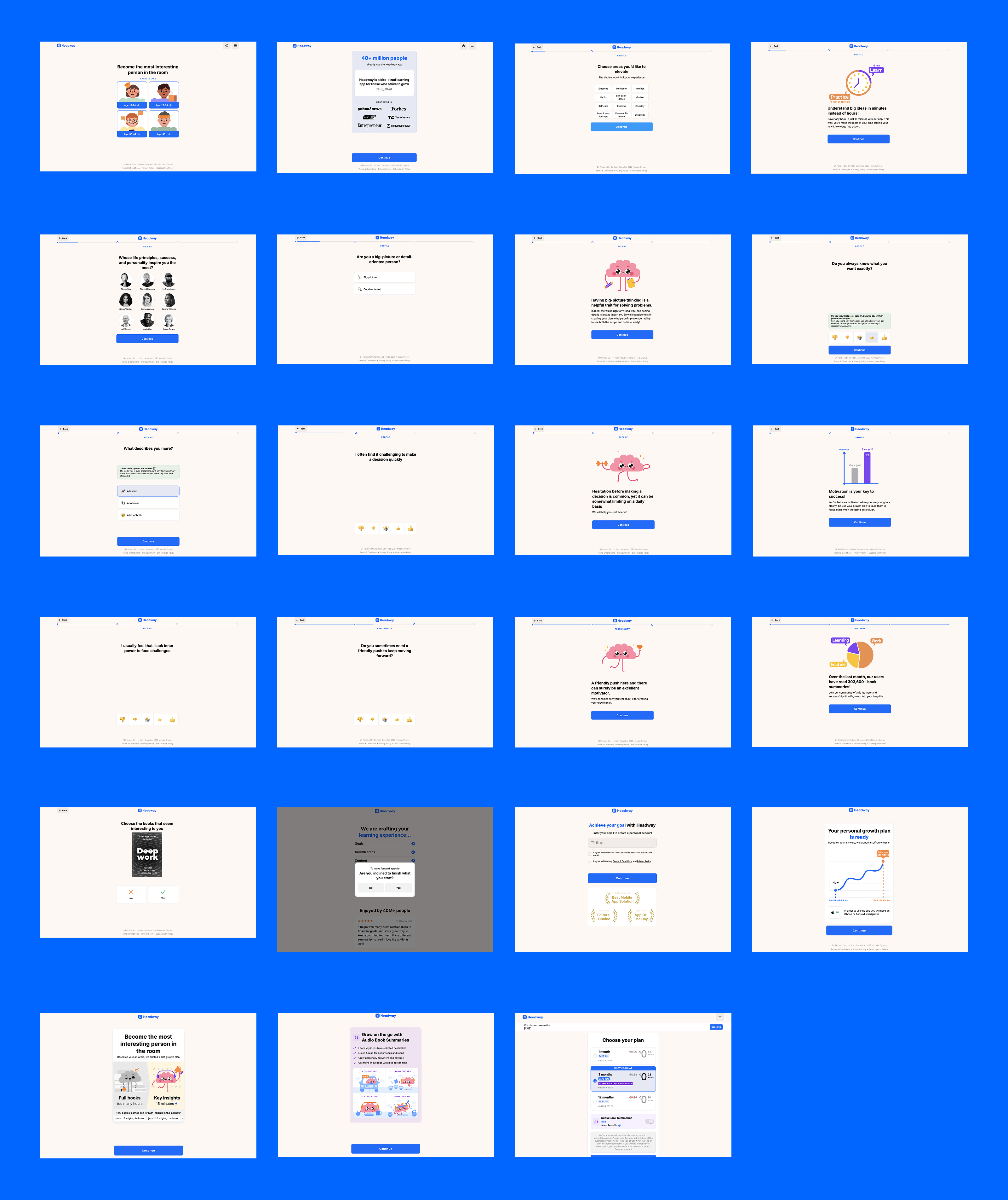
One final note: Web-to-App doesn’t replace your in-app onboarding experience. You’ll still need to introduce new features, guide first-time users, and build out a full app onboarding experience. But Web2App can be a powerful addition — one that helps you convert viewers into payers and explore entirely new audiences. Together they can create an overall positive user experience and bring results to your business.